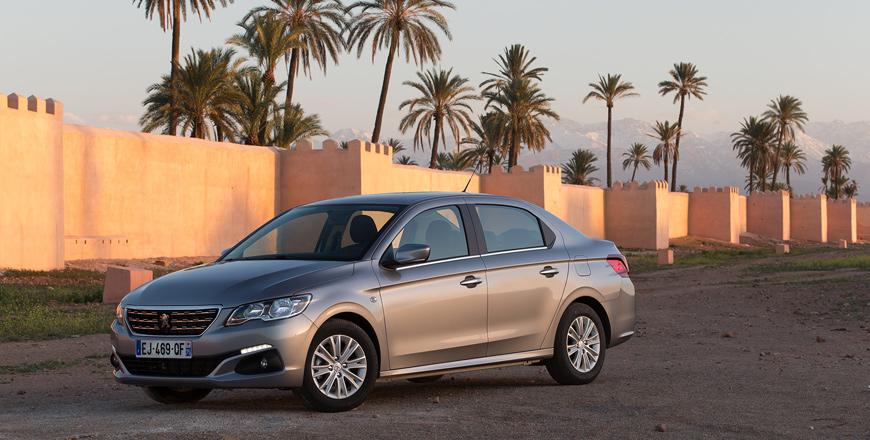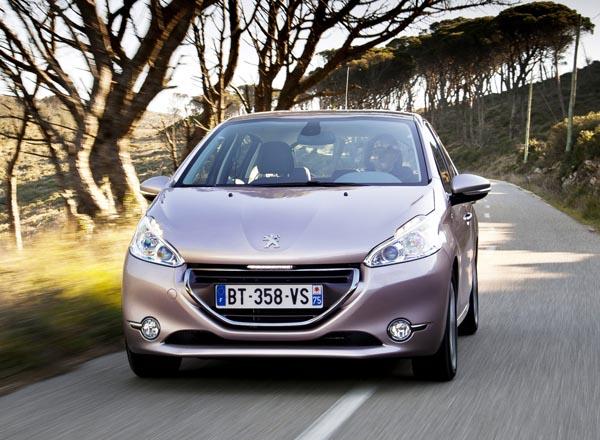You are here
Peugeot 301 1.6 HDi: Fit for purpose and frugal
By Ghaith Madadha - Jun 20,2016 - Last updated at Jun 20,2016

Photo courtesy of Peugeot
With plans afoot to improve diesel fuel quality and finally lift restrictions on the import of diesel-powered passenger cars in Jordan — as recently reported — Jordanian motorists will have access to economic cars, offering hybrid-rivalling levels of fuel efficiency without the compromises often associated with mixed petrol-electric and pure electric cars.
Often more popular than even petrol cars in Europe, diesel-powered cars encompass a broad range of vehicles from sophisticated and refined high performance vehicles to tough workhorses and frugal fuel-sipping runarounds. One such car, and particularly relevant to and developed specifically for developing markets is the rugged, efficient, spacious and classy but affordable Peugeot 301 HDi.
Adaptable and aesthetic
Thoroughly well thought out and fit for purpose, the Peugeot 301 was introduced in late 2012 as a non-Western European car designed for the demands, preferences and conditions of developing markets, and only offered in saloon body style as popular in developing markets. It is adaptable and robust, elegant yet affordable but not “cheap” and reasonably well-equipped without over-complication.
Aimed at reclaiming the popularity of such rugged and comfortable developing market heroes as the legendary Peugeot 504, the 301 may be built to a budget, but looks, drives and feels like a class act. Designed to fulfil the needs of first-time family owners with a limited budget and much expectation, the 301’s design is classy and contemporary.
With broad and stylish chrome-ringed grille, and sculpted bonnet, the 301’s defined flank character lines create a sense of movement and integrate harmoniously with its rear lights. The 301’s sills and spoiler like bootlid meanwhile lend a hint of the subtly sporty. High-set, the 301’s boot accommodates a generous 506 litres volume and expands to 13,32l with the split folding rear seats down.
Frugal and muscular
Modern, thoroughly proven, efficient and without unnecessary complication, the Peugeot 301 HDi’s 1.6-litre turbo-diesel is an 8-valve SOHC design utilising common-rail direct injection technology. Driving the front wheels through a 5-speed manual gearbox, it develops 91BHP at 4,000rpm and 170lb/ft at 1,750rpm, which allows for sufficiently perky 11.2-second 0-100km/h acceleration and 180km/h top speed.
Refined and smooth for a diesel engine, the 301 is well insulated from diesel clatter, while pick-up from idle suffers little by way of turbo-lag, and with an intuitive clutch biting point helps to progressive feed in power delivery. With a robust and muscular mid-range sweet spot, the 301 pulls with versatile confidence in town, on incline and at highway speeds.
Flexible and brawny in mid-range, the 301 HDi may give away a 1.5-second disadvantage to its 1.6-litre petrol-powered sister, but more than makes up for it with quicker more responsive 9.2-second 80-120km/h acceleration. Rising towards maximum power smoothly and with a 5,100rpm rev limit, the 301 HDi is considerably more economical than the petrol version, with frugal 4.3l/100km/h fuel consumption and low 112g/km CO2 emissions, on the combined cycle.
Rugged comfort
Driven extensively through diverse conditions during its global launch in Antaly, Turkey, the Peugeot 301 proved a well-balanced machine, reconciling ride comfort, highway confidence and handling ability. Reassuring at speed and on long drives, the 301 felt settled on rebound, while its steering 3.15-turn steering wheel compromises responsiveness, feel and weighting with stability and user-friendly lightness.
Turning tidily with decent grip into corners, the 301 HDi’s massive low-end torque can induce torque steer, but can easily be dialled back. Compact and light, the 301 is agile on narrow winding roads and manoeuvrable in town, while its supple suspension and optional 195/55R16 size tyres comfortably soak lumps and bumps, but also provide good body lean control and lateral grip through corners.
Riding on front MacPherson strut suspension with disc brakes for refinement and ability and torsion beam rear suspension with drum brakes at the rear for affordable durability, the 301 is practical, economic, comfortable and capable in demanding locales. During test drive, segments of the route included heavily rutted, cracked, lumpy and bumpy Third World tarmac and dirt roads, which the 301 dispatched with supple confidence and good 139mm ground clearance.
Smart choices
Build to tackle difficult roads and for affordability, the 301’s strategic use and placement of low cost hard plastics and better quality materials and textures lend it a more upscale feel. A classy cabin design combines with plush looking but inexpensive glossy black and shiny chrome effect trim to keep it cost effective and aesthetic. Meanwhile centre console-mounted electric window buttons cut costs.
With uncomplicated and user-friendly dash, contoured steering wheel, clear instrumentation and subtle cloth seat patterns, the 301 has a minimalist and unfussed sensibility. Spacious inside with good visibility to place it on road, the 301’s cabin is ergonomic and comfortable, with particularly good rear legroom. Meanwhile cabin refinement is high, and includes double sealed door barriers to protect from dust and damp.
Equipment levels are generous but well chosen for its segment and market, including quick cooling and effective A/C, fuel filler and boot release buttons, adjustable steering, CD/MP3 player and attractive alloy wheel options. Tailored for different markets, the 301’s standard and optional equipment list also includes ABS and emergency brake assist, electronic stability control, four airbags, seatbelt pre-tensioners, rear child seat Isofix mounts and five three-point rear seatbelts.
TECHNICAL SPECIFICATIONS
Engine: 1.6-litre, transverse, turbo-diesel 4 cylinders
Bore x stroke: 75 x 88.3mm
Compression ratio: 16:1
Valve-train: 8-valve SOHC, common-rail direct injection
Gearbox: 5-speed manual, front-wheel drive
Power, BHP (PS) [kW]: 91 (92) [68] @4,000rpm
Specific power: 58BHP/litre
Power-to-weight: 78BHP/tonne
Torque, lb/ft (Nm): 170 (230) @1,750rpm
Specific torque: 147.4Nm/litre
Torque-to-weight: 197.4Nm/tonne
Rev limit: 5,100rpm
0-100 km/h: 11.2 seconds
80-120km/h: 9.2 seconds
Standing km: 32.9 seconds
Top speed: 180km/h
CO2, combined: 112g/km
Fuel consumption, urban/extra-urban/combined: 4.9/3.9/4.3l/100km
Fuel capacity: 50 litres
Height: 1,466mm
Width (with mirrors): 1,748 (1,953)mm
Length: 4,442mm
Wheelbase: 2,652mm
Tread, F/R: 1,501/1,478mm
Ground clearance: 139mm
Luggage capacity, min/max: 506/1,332 litres (VDA)
Aerodynamic drag coefficient: 0.32
Kerb weight: 1,165kg
Suspension, F/R: MacPherson struts/torsion beam
Steering: electric-assisted rack and pinion
Turning circle: 10.7 metres
Lock-to-lock: 3.15 turns
Brakes, F/R: Ventilated discs 266mm/drums 203mm
Tyres: 195/55R16
Related Articles
A well devised and executed car first launched in late 2012, the Peugeot 301 was the French manufacturer’s foray into strengthening its posi
Well-received for its driving dynamic and design when launched, the new second generation Peugeot 308 debuted it’s new 1.2 PureTech engine family last year. Smooth and efficient, the PureTech engine is a petrol-powered counterpoint to more complex and costly and less hard-wearing or refined turbo-diesel and hybrid efficiency models.
Always better a small car done well than a large car done badly was the thought running through one’s mind after being left with a three-day gap in Dubai after a last minute cancellation of a much anticipated super saloon test drive before it had begun owing to technical problems — likely caused by an over-zealous and under-talented previous test driver.


















